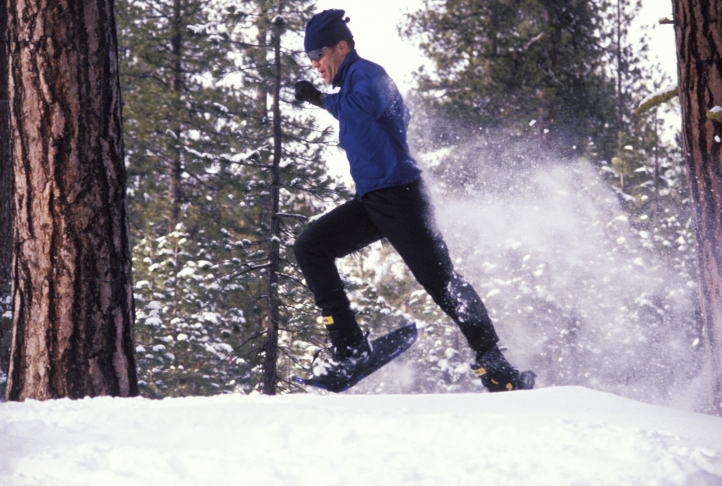Snowshoe running basics

We’re at the coldest point of the year, snow is burying the eastern seaboard and getting out for a run in some communities in Canada can be, admittedly, a bit unappealing, if not dangerous. So what can you do to keep fit?
Snowshoeing is a winter sport which has, in recent years, gained popularity across Canada and is an excellent alternative to your usual mileage. More and more ski resorts and sporting good stores are stocking snowshoes and cutting trails. It’s a great time to give it a try.
Snowshoe running is in many ways similar to regular running, though don’t jump to the assumption that there aren’t notable differences. Firstly, you will be moving a lot slower. Even with the snowshoes to keep you from sinking in, you’ll have to change your running form a bit. You’ll find yourself requiring lifting your knees higher and widening your stance to accommodate the snowshoes. It can also be very taxing on your aerobic system, more so than what you’re used to from normal mileage runs. Don’t expect to be able to go out and run the same distance as you normally would.
Your first time out stick to groomed trails. They’ll offer the best chance to get a feel for running with the snowshoes on your feet. Once you’re comfortable, you can try to deeper powder.
Also, the change to your gait and different muscle groups will likely leave you quite sore. This isn’t a result of any injuries, but working muscles which are often neglected in your normal form. Expect your hip flexors and quads to be very tired.
All snowshoes are not the same. They come in various sizes, designed for different snow conditions and activities. The deepest drifts are never going to be runnable, though a lot of the trails are runnable with the right equipment. Snowshoes designed for running a smaller, lighter versions of their bigger siblings. A pair of snowshoes will run you upwards of $150, though renting before you buy a pair makes the most sense.
Running snowshoes generally don’t get bigger than a metre in length and their width shouldn’t exceed 20 cm. Though there are exceptions under some brand names, most of the running snowshoes you find will have bindings designed to fit your current running shoes. Any pair will work, but a pair of waterproof trail shoes is probably your best bet to keep your feet dry.


